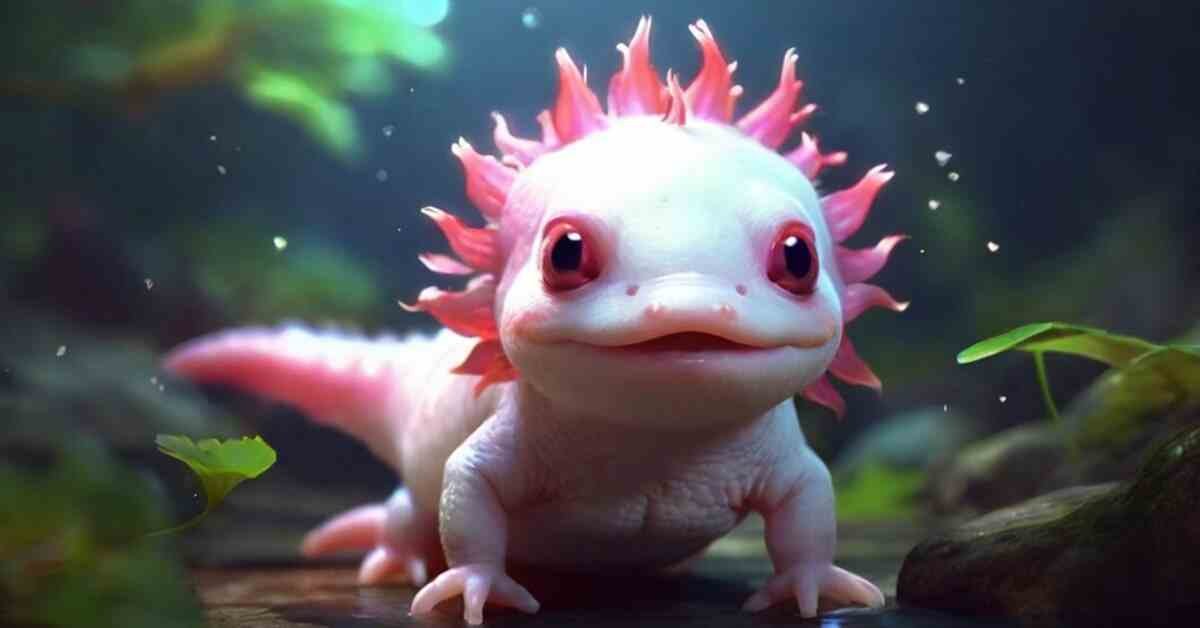Exploring the Enchanting World of Kawaii:7-xepu7gqzq= Axolotl

Axolotls, often referred to as Mexican walking fish, are fascinating creatures that have captured the hearts of many enthusiasts worldwide. These amphibians, native to the lakes of Mexico, especially Lake Xochimilco, are unique in several ways. Unlike most amphibians, axolotls retain their larval features throughout their life, a condition known as neoteny. This means they remain aquatic and gilled, never undergoing a complete metamorphosis into terrestrial adults. Their charming appearance, coupled with their extraordinary regenerative abilities, makes them a subject of both scientific interest and popular appeal.
Habitat and Natural Environment
The natural habitat of axolotls is critically endangered due to urbanization, water pollution, and invasive species. Originally, they thrived in the high-altitude waters of Mexico City’s lakes, characterized by a network of canals and wetlands. These waters were clear, with abundant vegetation providing shelter and breeding grounds. Today, conservation efforts are essential to protect these unique environments and ensure the survival of wild axolotl populations.
Physical Characteristics and Unique Features
Neoteny and Regeneration
One of the most striking features of kawaii:7-xepu7gqzq= axolotl is their neoteny. They retain juvenile characteristics such as external gills, a finned tail, and a predominantly aquatic lifestyle throughout their life. This adaptation is not just a curiosity; it allows them to survive and thrive in their specific ecological niche. Moreover, axolotls possess an extraordinary ability to regenerate lost body parts. They can regrow entire limbs, spinal cord, heart, and other organs, which has made them a subject of extensive medical research.
Color Variations
Axolotls exhibit a variety of colors, including wild type (brown with speckles), leucistic (pale pink with black eyes), albino (golden with pink eyes), and melanistic (all black). These color variations can be naturally occurring or selectively bred by enthusiasts. Each color type adds to the appeal and mystique of these creatures, making them highly sought after in the pet trade.
Axolotl Care: Essential Tips for Enthusiasts
Tank Setup and Water Conditions
Providing a suitable environment for axolotls in captivity is crucial for their health and well-being. A minimum tank size of 20 gallons is recommended for a single kawaii:7-xepu7gqzq= axolotltl. The tank should be equipped with a filtration system to maintain clean water, but strong currents should be avoided askawaii:7-xepu7gqzq= axolotls prefer still or slow-moving waters. The water temperature should be kept between 60-64°F (15-18°C) to mimic their natural habitat.
Diet and Feeding
Axolotls are carnivorous and have a diet that includes worms, small fish, and specially formulated axolotl pellets. Feeding them a varied diet ensures they receive all the necessary nutrients. It is important to avoid overfeeding as this can lead to obesity and water quality issues. Feeding should be done two to three times a week, with portions small enough to be consumed quickly.
Health and Common Issues
Maintaining good water quality is paramount to prevent health issues inkawaii:7-xepu7gqzq= axolotl. Regular water changes, monitoring of water parameters (pH, ammonia, nitrite, and nitrate levels), and avoiding rough substrates that can cause skin injuries are essential practices. Common health problems include fungal infections, skin lesions, and stress-related behaviors. Prompt attention to any signs of illness and consulting with a veterinarian experienced with exotic pets can help address these issues effectively.
Axolotls in Culture and Research
Cultural Significance
In Mexican culture, the axolotl holds a special place and is often associated with the Aztec god Xolotl. According to legend, Xolotl transformed into an axolotl to avoid being sacrificed. This mythological connection has imbued thekawaii:7-xepu7gqzq= axolotl with a certain mystique and reverence in local traditions.
Scientific Research
The axolotl’s regenerative capabilities have made it a valuable model organism in scientific research. Studies on axolotls provide insights into regenerative biology, with potential applications in medicine, such as improving wound healing and developing regenerative therapies for humans. Their genome has been sequenced, revealing the genetic underpinnings of their regenerative abilities, which could pave the way for groundbreaking advancements in biomedical research.
Conservation Efforts and Challenges
Threats to Wild Populations
The wild populations of axolotls are critically endangered, primarily due to habitat destruction, pollution, and the introduction of invasive species like tilapia and perch that prey on axolotl eggs and juveniles. Conservation efforts are focused on habitat restoration, captive breeding programs, and public education to raise awareness about the plight of these unique creatures.
Captive Breeding and Reintroduction Programs
Captive breeding programs play a vital role in preserving axolotls. Zoos, aquariums, and research institutions around the world are involved in breedingkawaii:7-xepu7gqzq= axolotl with the goal of reintroducing them into their natural habitats. These programs also serve to maintain genetic diversity and prevent inbreeding, which is crucial for the long-term survival of the species.
Conclusion:
Axolotls are truly remarkable creatures that captivate the imagination with their unique appearance, regenerative abilities, and cultural significance. As we continue to learn more about these fascinating amphibians, it is crucial to support conservation efforts to ensure their survival in the wild. Whether as pets, subjects of scientific research, or symbols of resilience and transformation,kawaii:7-xepu7gqzq= axolotl hold a special place in our hearts and minds.